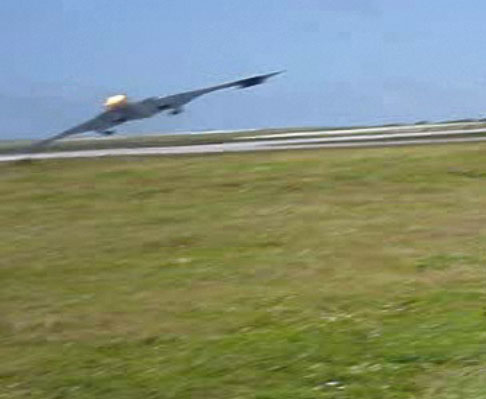While the lessons learned from the crash of a B-2 bomber in February aren’t applicable to the Air Force’s other stealth platforms, the F-22 and F-35 fighters, there are “other systems being deployed” that will benefit from the insights, Maj. Gen. Floyd Carpenter, vice commander of 8th Air Force, who led the B-2 accident investigation board, told reporters June 5. However, Carpenter declined to elaborate on what the other platforms might be, although a best guess would be next-generation long-range strike prototypes. Whatever the case, the AIB found that distorted data introduced into the B-2’s flight control computers during takeoff from Anderson AFB, Guam on Feb. 23 caused “an uncommanded, 30 degrees nose-high pitch-up” resulting in a stall and subsequent crash. Both pilots ejected. Moisture in port transducer units—which are essentially air data sensors also called pitots—during air data calibration led to faulty readings for which the flight control computers then tried to correct, leading to the pitch and stall. Carpenter said the aircraft lost, named Spirit of Kansas, was one of the best-performing and least problem-prone of the B-2 fleet, now down to just 20 aircraft. It had accumulated about 5,200 hours of flying time. Carpenter said the AIB doesn’t assign culpability and any disciplinary measures will be up to unit commanders to determine. (Click here for Air Combat Command’s Web page on the accident investigation, which includes the AIB documentation and videos of the actual mishap.)
the lessons learned from the crash of a B-2 bomber in February aren’t applicable to the Air Force’s other stealth platforms, the F-22 and F-35 fighters, there are “other systems being deployed” that will benefit from the insights, Maj. Gen. Floyd Carpenter, vice commander of 8th Air Force, who led the B-2 accident investigation board, told reporters June 5. However, Carpenter declined to elaborate on what the other platforms might be, although a best guess would be next-generation long-range strike prototypes. Whatever the case, the AIB found that distorted data introduced into the B-2’s flight control computers during takeoff from Anderson AFB, Guam on Feb. 23 caused “an uncommanded, 30 degrees nose-high pitch-up” resulting in a stall and subsequent crash. Both pilots ejected. Moisture in port transducer units—which are essentially air data sensors also called pitots—during air data calibration led to faulty readings for which the flight control computers then tried to correct, leading to the pitch and stall. Carpenter said the aircraft lost, named Spirit of Kansas, was one of the best-performing and least problem-prone of the B-2 fleet, now down to just 20 aircraft. It had accumulated about 5,200 hours of flying time. Carpenter said the AIB doesn’t assign culpability and any disciplinary measures will be up to unit commanders to determine. (Click here for Air Combat Command’s Web page on the accident investigation, which includes the AIB documentation and videos of the actual mishap.)
The Air Force’s Hypersonic Attack Cruise Missile is behind schedule and may significantly overrun its expected cost, which could partially explain why the service is reviving the hypersonic AGM-183 Air-Launched Rapid-Response Weapon.